On August 14, The Washington Post ran a front-page headline that would have been unimaginable a week before: “U.S. Says Nuclear War Isn’t Imminent.” Six days earlier, President Trump had directed the first in a series of ominous threats at Pyongyang, intimating that the United States was prepared to launch preventive war against North Korea. The president’s dire comments transfixed governments and publics around the globe. The ensuing media frenzy claimed that Trump’s remarks had prompted the commander of North Korea’s strategic rocket forces to initiate plans to fire four intermediate range ballistic missiles into waters near the U.S. territory of Guam, which houses U.S. long-range bombers that would be directly involved in hostilities on the Korean Peninsula.
Now, a semblance of calm returned to the peninsula, at least for the moment. Kim Jong-un, North Korea’s supreme leader, resurfaced following a two-week absence and stated that the North would defer plans for missile launches close to Guam. President Trump offered Kim a complimentary tweet:
Kim Jong Un of North Korea made a very wise and well reasoned decision. The alternative would have been both catastrophic and unacceptable!
— Donald J. Trump (@realDonaldTrump) August 16, 2017
Global audiences, whipsawed in a matter of days between fears of the gravest international crisis since Cuba in 1962 and the equivalent of an “all clear” signal, had ample reason to wonder about U.S. policy.
Cause and effect at times of high threat are not always easy to disentangle, especially under a U.S. president determined to dominate the news cycle and to deflect attention from his growing political vulnerabilities. The current lull in Korea could prove little more than a pause, especially as long-scheduled annual exercises between the United States and South Korea have commenced. Even more important, North Korea’s missile and nuclear capabilities have continued to advance, including successful launches of two missiles during July that on a normal trajectory would be able to reach much of the continental United States.
The North’s successful missile tests were the proximate source of President Trump’s dire warnings. Several weeks before Trump’s inauguration he had tweeted that such tests “won’t happen!” and the president seemed to take the missile launches as a personal affront. Depending on the next moves by Washington and Pyongyang, a true crisis might be no more than a tweet storm away. The “fire and fury” warning quickly sobered global audiences to the power of incendiary words, but this was a confrontation deferred, not the resolution of larger, long-term dangers.
Signals from Pyongyang
But were recent events even a genuine crisis? The evidence is far from compelling.
It was President Trump, not Kim Jong-un, who undertook the war of words.
Much of the media coverage following the president’s warnings claimed that President Trump and Kim Jong-un had undertaken an escalating war of words that threatened direct military conflict between Washington and Pyongyang. Yet there were no signs of reinforced U.S. military deployments close to the Korean Peninsula, or any signs of military mobilization in North Korea. Commander of the North’s strategic rocket forces General Kim Rak Gyom and a military spokesman were the only North Korean officials to make even passing reference to President Trump’s “fire and fury” threat. Kim Jong-un was entirely out of sight between July 30 and August 14, when he reviewed the plan for an “enveloping attack” involving four Hwasong-12 missiles purportedly aimed near Guam. It was President Trump, not Kim Jong-un, who undertook the war of words and sustained it over the course of multiple days.
Threats of military attack are a staple of North Korean propaganda, but Trump administration officials displayed no awareness of Pyongyang’s flamboyant style. Within hours of the president’s “fire and fury” warning, General Kim declared that the North’s strategic forces “will finally complete the plans for an encircling fire on Guam by mid-August and report it to [Kim Jong-un] and wait for his order while on standby for launch.” Threats to attack Guam have appeared in North Korean media as early as 1998, though the single successful launch of the Hwasong-12 in mid-May lent greater credibility to the latest threat.
General Kim’s pledge was the latest in a long lineage of announced but never executed North Korean military plans. North Korea routinely specifies that its plans are conditional, and depend on the orders of its supreme leadership and on U.S. actions. As the general noted: “[T]he measures that we plan to take this time should be an effective prescription for restraining the insane behavior of the United States on the Korean Peninsula and in its neighboring region.” This is the language of deterrence, not of unilateral military action. When Pyongyang undertakes threatening military moves, it acts at a time and place of its own choosing, without advanced warning of its intentions. In addition, a senior general issued the presumed threat, providing Kim Jong-un flexibility and a measure of deniability.
No messing around
Regardless, the events of recent weeks should be deeply sobering. The avoidance of major military conflict on the peninsula (whether between the two Koreas or one involving the United States) must remain the proximate U.S. policy objective, even as American officials sustain the longer-term effort to curb, contain, and ultimately reverse the North’s nuclear threats. Statements from ranking U.S. officials following the president’s initial remarks largely emphasized the latter message, thereby reducing the risks of inadvertent conflict. But there was undoubted escalatory potential in President Trump’s language. Without quickly countermanding the president’s hyperbolic warnings, events could have moved in much more dangerous directions.
Dealing with North Korea cannot be political theater.
The domestic needs of two self-referential leaders could also reinforce worrisome possibilities. President Trump might believe that worst-case threats serve his political purposes at a time when his administration is ever more embattled. If he construes Kim Jong-un’s decision to forego escalation as a personal political victory, he could employ such language yet again. Moreover, statements suggesting the U.S. readiness to undertake the unilateral use of force validate the acutely threat-driven logic that helps legitimate Kim Jong-un’s rule, including his undiminished pursuit of nuclear and missile capabilities. This can in no way be in in the U.S. interest, or in the interest of America’s Northeast Asian allies. It also undermines the U.S. effort to elicit enhanced cooperation with China to constrain North Korea’s nuclear and missile advances.
The events of early August revealed deep dysfunction in the Trump administration’s decisionmaking process. Poor coordination across departments and agencies; the outright absence of message discipline; the disjunction between rhetorical threats and actual military operations; and an apparent lack of familiarity with the North’s flamboyant propaganda style are recipes for policy disaster. Dealing with North Korea cannot be political theater. Without a serious, sustained effort to move the policy process in far more disciplined directions, the risks of a genuine crisis on the peninsula become far greater, and vastly more worrisome.
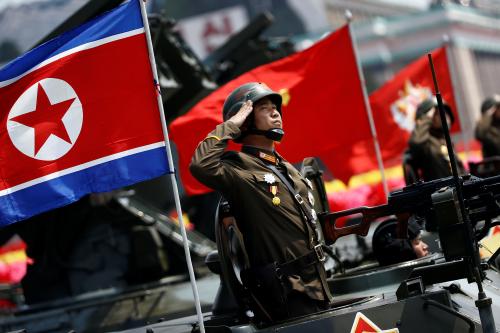
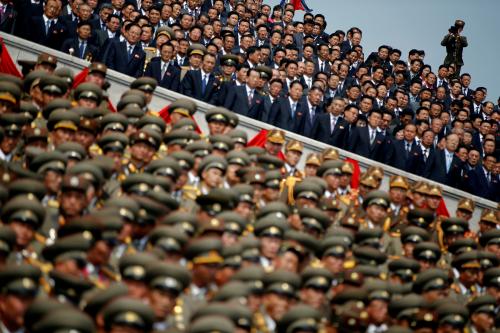
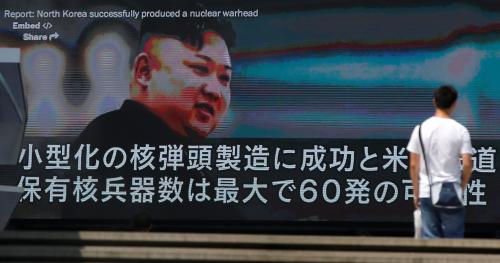
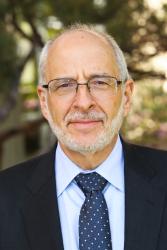
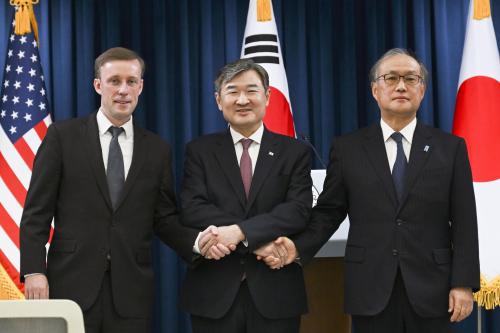
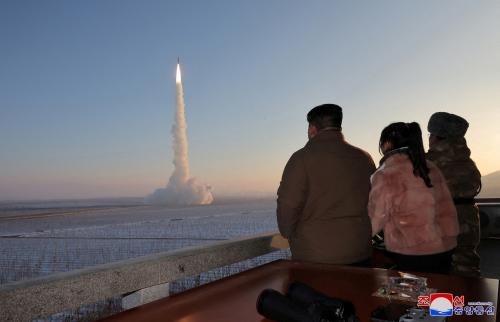
Commentary
As “fire and fury” subsides, what are the lessons learned?
August 21, 2017